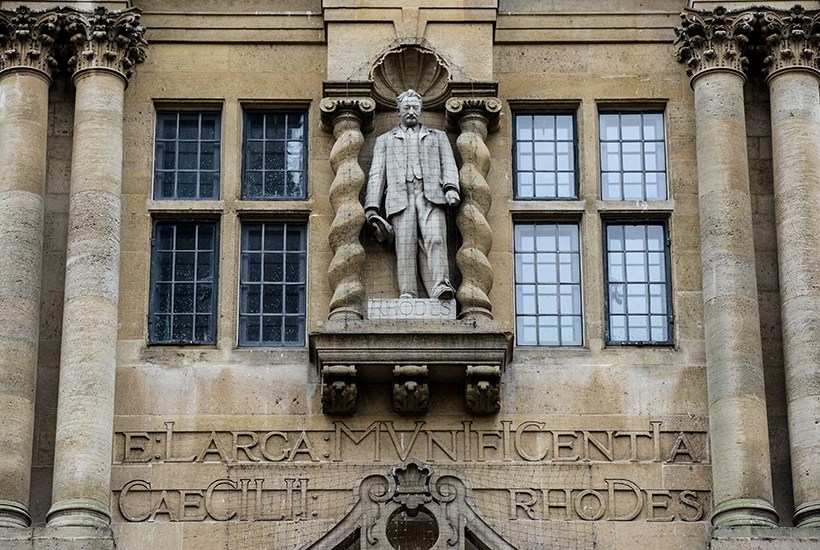The mob is at work again in Oxford, protesting against the existence of Oriel’s statue of Cecil Rhodes. But this is a mob of dons who, rather than doing anything about it, have decided just to stop teaching at Oriel. And that will solve the problem? The Romans were a little more proactive.
‘Statue’ derives from statuo, ‘I place X so as to remain upright’. That was its correct position, where it could be kissed, garlanded and so on. Cicero mentions a deity whose mouth and chin had been worn down by worshippers. Vandalism and indeed theft were known, but it was damnatio memoriae (‘condemnation of memory’, a designation invented in 1689) that the powerful, especially emperors, feared. This took the form of a senatorial decree to erase their name from all records, resulting also in their statues being torn down, abused and dragged through the streets by chanting crowds, as were their bodily persons and sometimes their families too. Indeed, in the case of Geta (murdered December 26 ad 211), even mentioning or writing his name was a death sentence.
But there was a paradox at the heart of damnatio: the destruction of the memory would be effective only if that destruction were to be remembered. So the base of the statue was usually retained, with the name half-erased: as Cicero said in the case of the hated governor Verres, the people thought it more important that it be known his statue had been thrown down, rather than never set up. There was something of a problem with bronze statues that were melted down, leaving no trace, but it was resolved by turning the bronze into e.g. a bedpan or similar (‘See this? It was once X’). Another imaginative turn was to remove the head of the condemned statue and replace it with the head of the successor, as happened with Domitian’s head in ad 96, replaced by that of Nerva.
So replace the head of Cecil Rhodes with that of, say, the Revd Canaan Banana. That would make a world-leading solution, sure to be widely applauded by the mob.
Got something to add? Join the discussion and comment below.
Get 10 issues for just $10
Subscribe to The Spectator Australia today for the next 10 magazine issues, plus full online access, for just $10.
You might disagree with half of it, but you’ll enjoy reading all of it. Try your first month for free, then just $2 a week for the remainder of your first year.














Comments
Don't miss out
Join the conversation with other Spectator Australia readers. Subscribe to leave a comment.
SUBSCRIBEAlready a subscriber? Log in